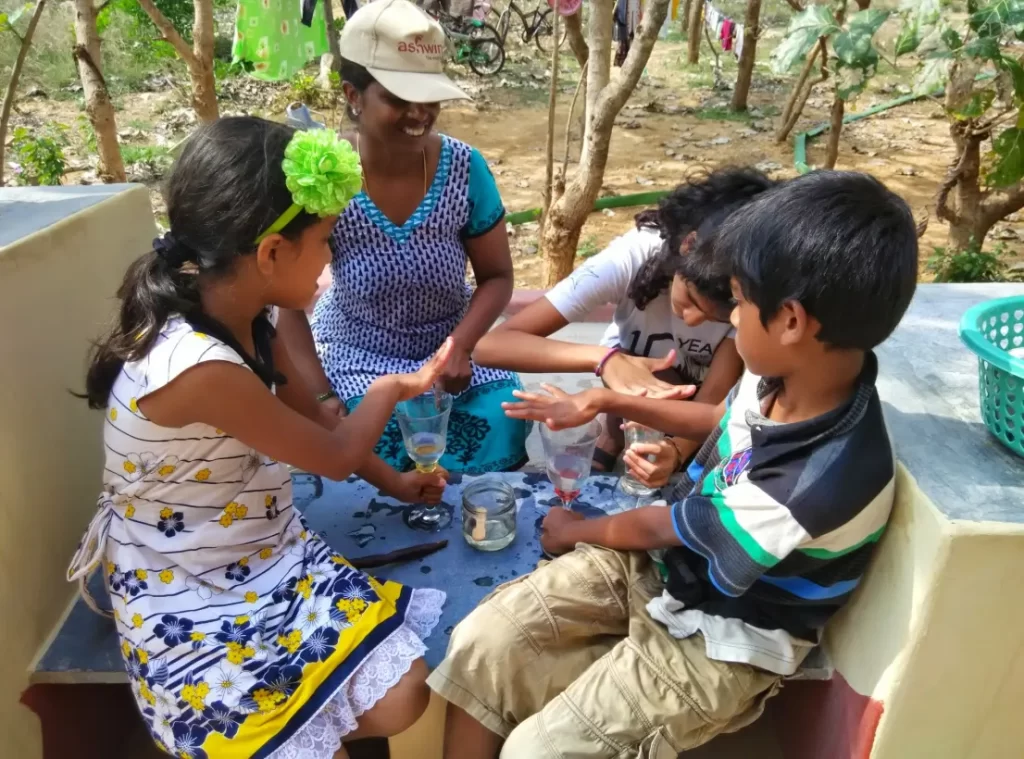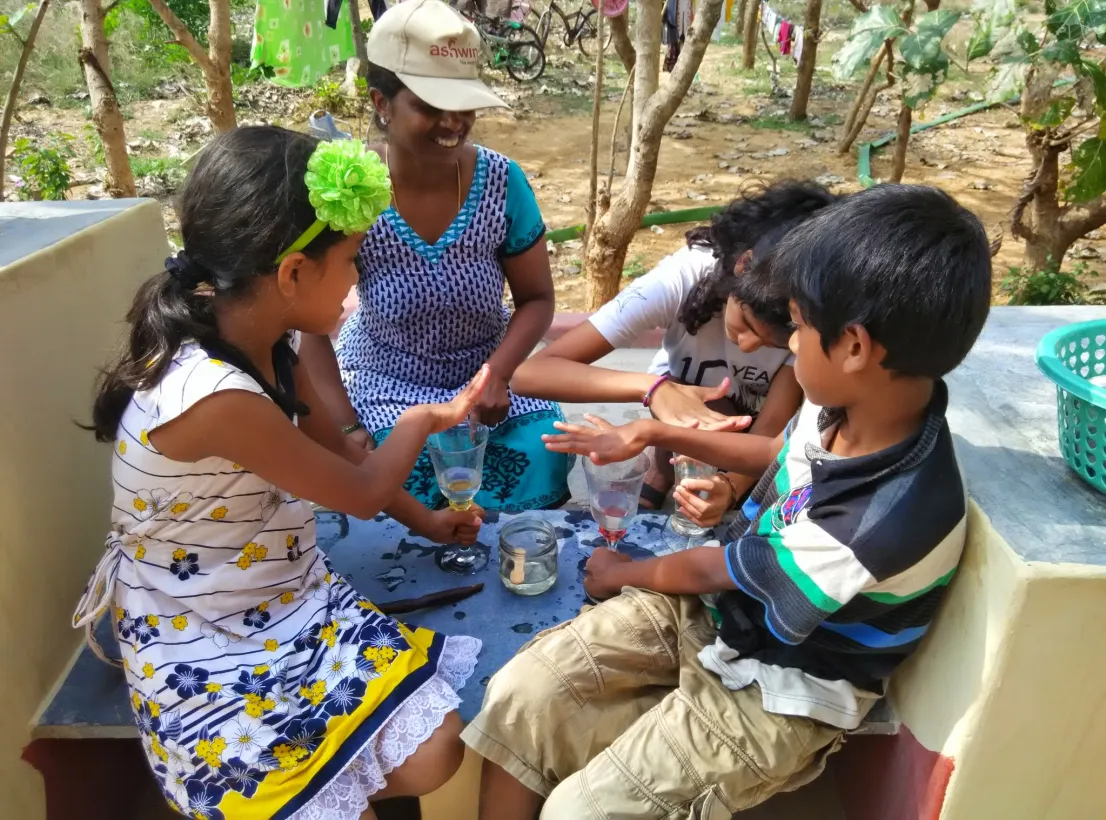
1. Everything needs to be taught to the child
The first myth that mainstream narrative has created is centered around learning by being taught. We consider that is the only way to learn anything since it has been ingrained in us from a younger age and for many years since schools came into existence.
We completely discount how infants learn their mother tongue and movements like crawling, walking, speaking without any teaching. In child-based education, child decides what he needs to learn and this keeps evolving as per age, peer influence, needs, aspirations and many other factors. This makes the learning very dynamic that adapts to the child’s needs, strengths and talents.
2. Child needs to learn step by step in fixed a sequence
The second myth is that learning needs to be structured in boxes and we need to learn in a chronological manner. First you learn the basics and then you apply it practically. First learn the alphabets, then words, then sentences, then grammar, then paragraphs and now you can start writing.
Now, imagine the sequence of the toddler, he observes, sees the need to communicate, start with sounds, utters broken words and eventually starts speaking words and sentences. Grammar and all of the syntax and semantics is built through usage of the language, by constantly speaking which is as per need. This is what is exactly adopted in a child-based which makes the learning contextual, relatable and applicable for the child.
3. Learning needs different subjects
This one is huge and the whole world is fixated with subjects, curriculum. If child is not doing well in one or couple of subjects then there is a huge problem to tackle by the child and also, parents.
In child-based education, the whole of learning is centered around the child. Every aspect of learning is expanded from the child. There are no subjects to be learnt. Instead, we focus on what the child likes doing and empower the child to start doing by taking up challenges, doing projects etc. As part of this whole doing, child picks up a host of skills which makes learning holistic
4. Learning needs to be made FUN for the child
A quick glance at social media and you will be amused to see much content around fun learning based activities for children. While there may be nothing wrong with it, child-based education doesn’t put any emphasis on making learning fun.
Here, we are not disconnecting the child from her strengths, interests. We are totally relying on learning by doing and empowering the child to decide for themselves. This means child is capable of making their learning either fun, challenging, simple, easier, interesting or any flavour they want to add. As mentors, we can help them play around with different permutations but we don’t have to add anything for the sake of making it fun and interesting to the child. Instead, our role is only to expand the canvas for the child. And you would be surprised, mostly children love real challenges over fun activities.
5. Marks decide child’s learning capabilities
So much of the initial years of childhood is fret over writing marks and scoring “good” marks in mainstream schooling. With these external assessments come the labels of intelligent, dull, failure, successful etc.
Imagine, if the child could do self-assessment and reflect on the entire process. Child decides what was challenging, what was easier, where they went out of comfort zone, where they used imagination, where they were creative, where they had fear, what were the doubts and many other interesting parameters instead of a standardised metric for all. This is huge responsibility which build in a whole set of life skills like self-leadership, confidence, analytical and problem solving in child. Intersting, these skills rank top in the world economic forum skills for future.
